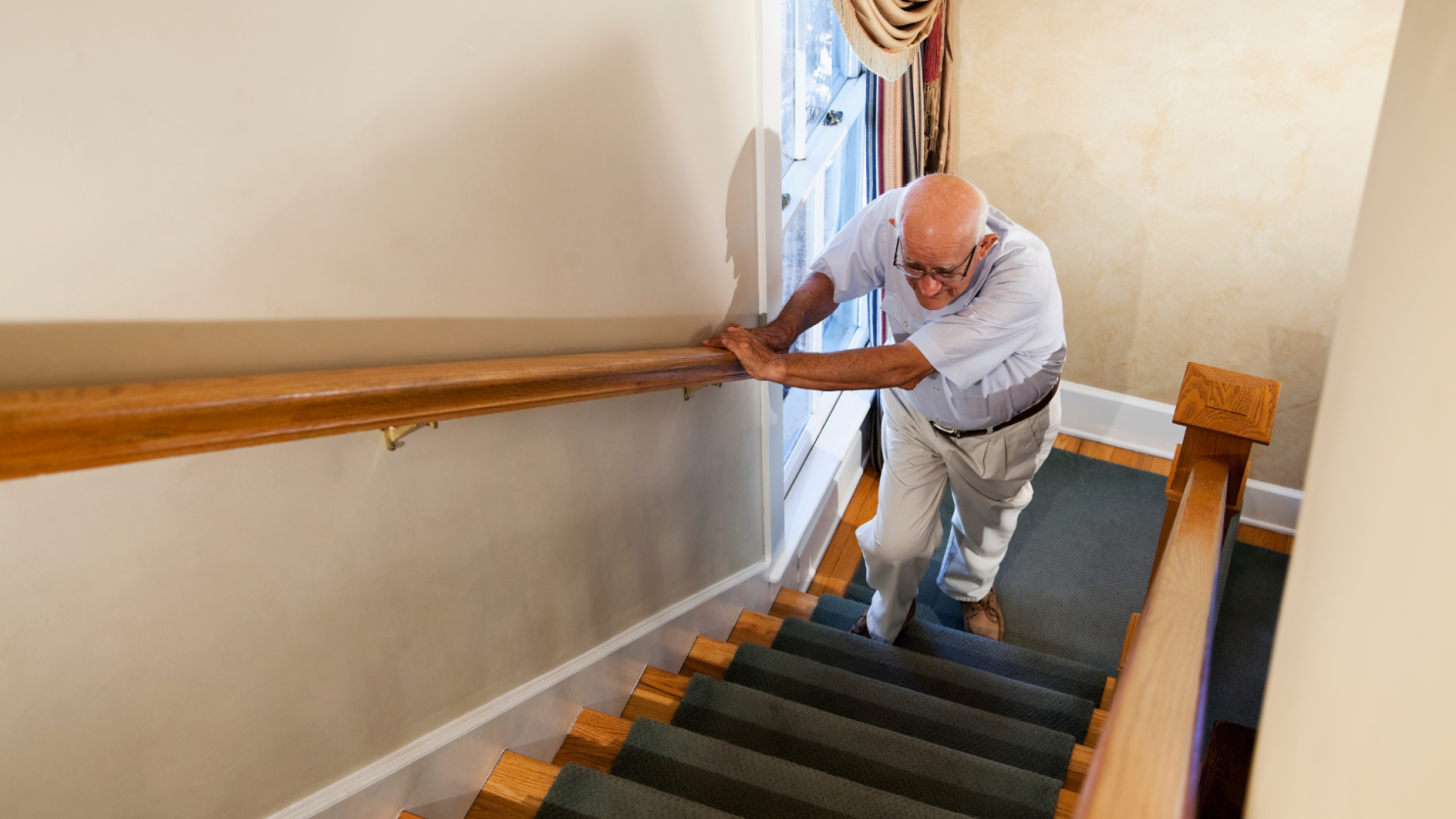Why is it that we can perform a movement effortlessly one day... jumping, sprinting, squatting, climbing... and then somewhere along the way, without realizing it, we've crossed an invisible threshold where that movement is no longer possible? Even worse, if you try those movements again, you'll likely hurt yourself. The fascinating truth is that mobility doesn't disappear overnight; instead, our compensation systems mask decline so effectively that we often don't recognize the gradual shift until it's already happened.
Typically, simple everyday tasks like walking across a room or climbing a few stairs remain consistent well into older ages. However, what we are discussing is called "functional reserve" - your body's extra capacity for when life demands more than basic movements like a slow walk. For example, you might walk normally every day without issue, but when your toddler suddenly runs toward a busy street, you discover you can no longer sprint fast enough to catch them in time.
Here's the timeline of what's actually happening: Physical performance typically peaks in your mid-20s to early 30s for most people. After age 30, your cardiovascular system loses about 1% of its maximum capacity each year. Your muscle fibers start showing microscopic quality changes, though your total strength stays stable. Reaction times begin to slow by milliseconds - unnoticeable day-to-day, but measurable over years.
By your fifties and sixties, your body works harder behind the scenes. Your brain recruits extra areas to maintain balance. Your joints show wear, so surrounding muscles adjust how they activate to keep you stable. Your metabolism becomes less efficient, naturally steering you toward simple movements that don't drain you or put your joints under much strain. However, this is a double-edged sword: your body is protecting you in the short term but setting you up for faster decline in the long term.
At the population level, mobility decline looks like a gentle slope. At the individual level it resembles more like a hockey stick. For decades your compensation systems (nerves, muscles, joints, and energy pathways) hide the small changes. Once those systems max out, the line drops sharply, and stairs or uneven sidewalks feel challenging almost overnight. You might even think "dang, it's been years since I've run." This pattern explains why mobility loss often catches people by surprise.
This tipping point varies dramatically between individuals. Some people cruise into their eighties with solid mobility, while others struggle in their sixties. The difference comes down to two main factors: how much functional reserve they built up during their younger years (through working out and remaining active), and how well they maintained all the different systems that mobility depends on. Key word here… maintained.

Before mobility limitations become obvious, subtle changes signal that your compensation networks are working harder:
Many times, these signs appear years before obvious mobility limitations, which provides a valuable window for change.

Building functional reserve in your thirties, forties, and fifties yields outsized protection later on. Like a retirement account, small consistent deposits of varied movement and fitness can begin to compound over decades. The person who maintains cardiovascular fitness, movement variety, strength, and flexibility through midlife enters their sixties with far more capacity than someone who waits until problems start to appear. You don't need to obsess over mobility training when you're younger. Just stay active and incorporate these principles early. Consistency is key!
Mobility represents far more than the mechanical ability to move from one place to another. It's your independence, confidence to engage with the world, and often your connection to activities that bring meaning and joy to life. Unfortunately, the reality is that some people reach the end of their life because of a broken hip, leg injury, or fall that forces them into extended bed rest that they never recover from. By treating mobility as a multi-system asset rather than a single muscle issue, you can keep jumping, running, hiking, swimming, dancing and so much more for many years to come. Choose one pillar today, make it a habit, stay consistent, and extend your mobility well into your later years!


More Info: At WellPro, we’re building an AI-native clinical platform purpose-built to scale the next era of care: personalized, preventative, and data-driven. Our thesis is simple but bold; the future of care delivery will be patient-centered, proactive, longitudinal, and closed-loop. That demands infrastructure that can ingest multi-modal health data, generate insight, drive action, and continuously optimize based on outcomes.
We believe Agentic AI is central to making this vision real. Not just chat interfaces or “co-pilots,” but deeply embedded, goal-driven AI agents that operate within the clinical system itself, helping surface insights at the point of care, automate routine tasks, and ensure closed-loop follow-through on interventions.